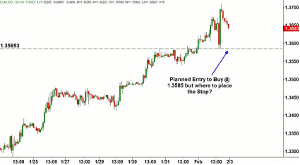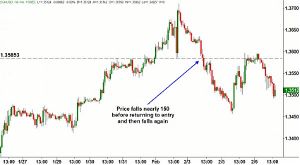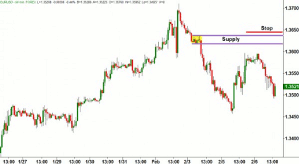Traders should take a page out of a soldier’s manual and adapt the philosophy that it’s better to lose a battle and win the war than the other way around, notes Sam Evans of Online Trading Academy.
In my years as a trader and instructor with Online Trading Academy, I have been in the position to meet many people from around the world, each with similar goals to become consistent in the financial markets and create their own destiny. I do my very best to help them in any way I can, because as we all know, trading is not the easiest skill in the world to master.
While many people eventually fall by the wayside, others do stick with it long enough to fully recognize that although trading is essentially simple, it is not easy, mainly due to the problems we as traders create for ourselves on an ongoing basis. The “mental game” as we call it, is a far more challenging one than the actual trading itself.
No matter where we come from or what our experiences were beforehand, inevitably we all make the very same mistakes in the markets, most of which are derived from the simple fact that we hate to lose. From the cradle to the grave, we are programmed by society and culture that being right is good and wrong is bad. In trading terms, this equates to winning and losing as positive and negative experiences respectively.
Sure we love the feeling we get when we win a trade but it can be hard to stomach a loss of any kind no matter the size of the actual financial loss. While it is so easy to get caught up in the emotions of the financial wins and losses, a consistently profitable trader enforces a different mindset altogether, instead choosing to focus on the potential rewards and risks, which are presented to them when they see an objective trading opportunity before them.
They do not care if they win or lose because unlike the emotional novice, they know that in the long run we can be right nine times out of ten and still lose money if our risk management practices are not completely enforced at all times. Any professional trader knows that the real key to solid money management and achieving profits from the markets is based around a speculator’s average wining trade size to their average losing trade size. You get this right and you will soon realize that you can lose many more times than you actually win and still make money consistently from trading. The first step in the process is to accept how to avoid a large loss in the first place.
I met a gentlemen only yesterday who came to one of our orientations in the London. As I was talking to class about the importance of stop loss orders and risk management, he raised his hand and challenged me about the point I was making. At the time I was saying that when we are on the wrong side of the market, we should get out automatically, take the small loss , and move on to the next opportunity. He disagreed with the point I was making and said that in his experience, allowing the trade enough room to breathe and go his way was working well for him.
I asked him for a recent example and he told me about how he had bought a currency pair just the day before and the trade immediately went against him. He said that he walked away for 10 minutes and then came back and the trade was now going almost 50 pips against him. I asked him what he did as he said that he decided to leave it and come back an hour or so later. Upon his return he saw that the market had fallen around 100 pips against him but had bounced back and was now 6 pips in his favor. He decided to take the profit and close the day out a winner.
NEXT PAGE: Always Examine Risk vs. Reward
|pagebreak|After telling me about what happened, he asked me for my opinion. I said to him that he was playing a very dangerous game because in reality he risked 100 pips to make just 6 pips. With a risk to reward ratio like that, you are bound to get plenty of small wins but what will you do when the market doesn’t bounce back for you? Those odd 100 pip losses will eat into any minute wins in the blink of an eye. This is a common mistake that so many novice traders make in their quest to be right more than they are wrong and is pretty much the most slippery of slopes. Let’s take a look at a chart to explore this more:
In the above example, let’s say that we were looking to join the upwards trend we were seeing in the above market. Perhaps we wanted to buy a pullback to the old support and resistance area around 1.3585, looking for a continuation of prices moving to the upside. In this case though, we will not choose to place a stop loss as we are happy to let the trend take care of us. After all, the market has been going up so far, so who’s to say it won’t continue to do so? Let’s take a look at how that worked out for us:
As we can see, the buying opportunity was not a successful one, with prices continuing to fall from our entry point by almost 150 pips. But let us assume that we didn’t close out the trade when we got it wrong and rather held on until it came back to move in our favor. Not only did this take over two days of agony but with leverage being used as well, we also have to ask ourselves if we could have endured the margin requirements by our broker to hold this position for that long? And what if prices would have just continued to fall? What then? An account can be easily be wiped out with one bad trade, no matter how many wins you have taken before getting to that point. It’s not hard to be a winner by any means, but it’s also not the wining, which determines our long-term profitability either.
With our core strategy that we teach here at the Academy, we enter and place our stops as close to the point at which we are proven wrong as possible, thus maximizing our potential risk/reward profile in our plan before we even place the trade:
The above supply zone offers us a solid risk parameter and high potential reward to boot, irrelevant of whether the trade wins or loses in the end. We only need a few winners here and there to still make great gains in the market without having to rely on being right more than wrong.
Remember that if you are one of those traders who refuse to close out a losing position because it’s not a ‘real’ loss until it is closed, then I pray for you that the market is kind. In fact, I feel that the worst thing, which can happen to you is for it to ‘come back’ after going against you for a long time, as all this will do is encourage you to do that same thing again the next time you get it wrong. Let’s hope that the next time is your last time as well….
Sam Evans, Trading Instructor, Online Trading Academy
























